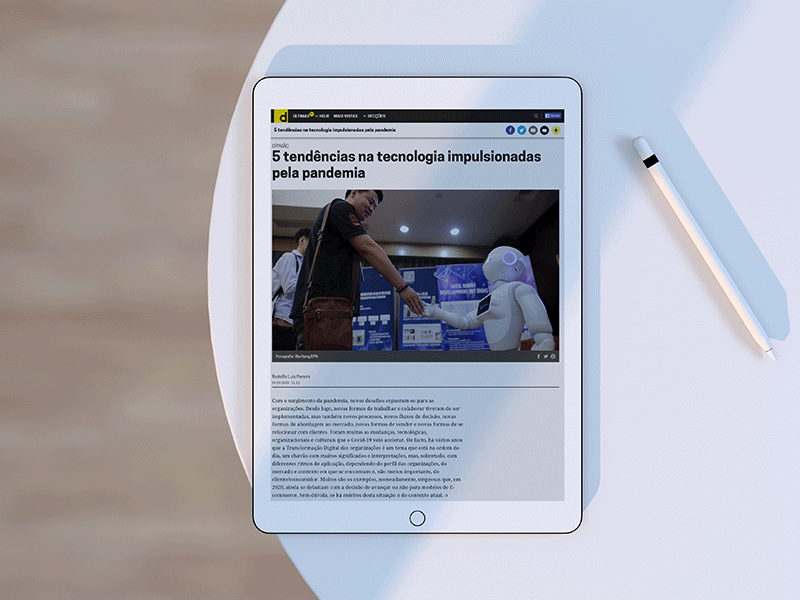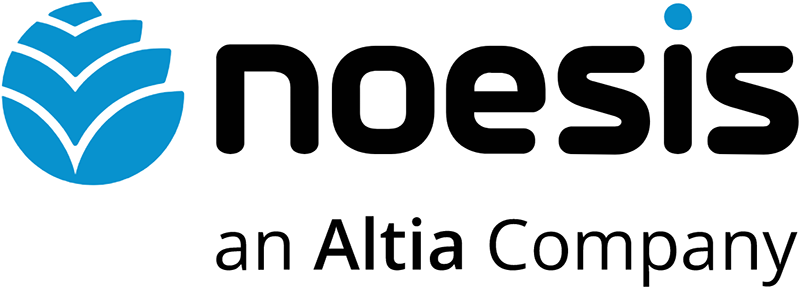
By Rodolfo Luís Pereira, Enterprise Solutions Director at Noesis
With the emergence of the pandemic, new challenges have arisen for organizations. Right from the start, new ways of working and collaborating had to be implemented, but also new processes, new decision flows, new ways of approaching the market, new ways of selling, and new ways of relating to customers. There were many technological, organizational, and cultural changes that Covid-19 accelerated. In fact, the Digital Transformation of organizations has been a topic on the agenda for several years, a buzzword with many meanings and interpretations, but, above all, with different rates of application, depending on the profile of organizations, the market and context where they are and, not least, the customer/consumer. There are many examples, namely, companies that, in 2020, were still struggling with the decision to move or not to E-commerce models. Undoubtedly, if there are merits in this situation and in the current context, the main thing was the acceleration it caused in these organizations.
The forced confinement we were subjected to changed us as consumers, even those who already resorted to digital formats, to make some purchases, to relate to their bank or to hire certain services, for example, they reviewed their behaviors, adopting the digital channel even for situations where they were still “resistant”. On the other hand, the widespread situation of teleworking to which organizations were faced, also brought internal challenges, in addition to adapting their business model to the new market demands, it was necessary to define new work processes and new ways of working. internal organization.
It is in this combination between the market and the internal organization that it is possible to identify 5 major trends of the pandemic's impact on technology:
1. Collaborative and Productivity Platforms
Probably the most visible change and trend in this Pandemic context. The direct consequence of teleworking has led organizations and employees to seek collaboration tools, to keep in touch, to hold meetings and video conferences. It is no coincidence that platforms like Zoom have achieved a market valuation higher than the five largest aviation companies in the world ... combined! The first step is taken, the use of video conferencing, virtual meetings, webinars, or virtual events is widespread, but this is only a tiny part of the benefits that these platforms can bring to organizations. Tools like Microsoft Teams allow for much more collaborative chat or video meetings. These tools open up a world of possibilities to make work more collaborative, increase productivity and the efficiency of organizations. Collaboration and documents co-editing, for example, creating collaborative work teams, team planning tools, apps that allow you to manage common spaces in an office and manage room scheduling, measure productivity and employee satisfaction rates , develop applications that automate routine tasks, all of which can be developed based on Microsoft Teams. The future of collaboration and productivity is here!
2. Process digitization and automation
Within organizations, the current context has accelerated the need to optimize and accelerate processes, digitize, automate flows, reduce bureaucracy, make decision processes more agile, are concerns that technology helps to solve. Allow, for example, that a bank account opening process or that the formalization / subscription of a service to be 100% digital, without the use of paper, without the need for physical signature - using electronic signature solutions, for example, and without the need to travel to a counter or store or any face-to-face recognition, all of it is now possible thanks to technology. Also in the "back-office", having automated approval processes, without sending emails, with pre-defined decision flows and approvals that can be done with a simple click, allowing organizations to speed up, optimize and become more efficient, which gains special relevance in a context where employees are dispersed, in their homes and physically distant.
3. Customer Experience
The user or customer experience. A buzzword widely used especially in the development of interfaces (such as a website or app) for interacting with customers. However, the customer experience is not limited to a visual or design or visual issue, it is a transversal issue to the business and must cover all points of contact of a brand with its customers, whether physical or digital. Technology, today, allows us to guarantee this uniformity. Working with existing information and analytics in organizations, getting to know customers better and better, investing in a segmented and personalized communication, guaranteeing a coherent and uniform customer experience, in all channels, are increasingly important issues in the current context.
4. Virtual Assistants (Bots)
More than tools for interacting with the client, Bots can contribute to the automation and optimization of the processes previously mentioned. This technology, more and more advanced, nowadays allows voice recognition, natural language and contextual conversation, it is increasingly easy to implement bot solutions and more and more intuitive to use them, whether in interaction with a customer - for example, guiding a user in an online purchase process of a product or service, but also in an internal logic, to help employees in a certain process, asking them for concrete actions and ensuring the entire process automatically. The introduction of artificial intelligence in this technology opens up even more possibilities, with Bot's ability to “learn” and evolve as the organization's maturity increases. Bots have long ceased to be mere chats of pre-formatted questions and standard answers that we post on a website.
5. Space and Resource Management (physical and human)
The new challenges of “deconfiguration”, that will be gradual and regulated with constant legislative changes, schedules, different rules depending on geography, maximum capacity, distance, etc., obliges companies and institutions that manage public spaces to adapt quickly. It is necessary, on the one hand, to quickly adapt these spaces to the new rules and, on the other hand, to monitor their application. How many people in store? How to manage the queues? How to provide the best possible experience to the customer who comes to our space - restaurant, store, museum, public service? Once again, technology responds. Applications for queue management, space organization, monitoring based on data collected in real time, apps for the consumer to manage their trip to the store, virtual passwords, notifications, all solutions that are emerging in the market, which can be developed with the existing technology, integrating several interfaces and systems within the companies will make this "new normal" more normal.
In fact, the biggest advantage of the current context, which, unfortunately, we all live in, is the technological acceleration we have seen, both in organizations, in particular, and in all sectors, in general. Most likely, if we had not been put to the test to find the most innovative and appropriate solutions to be able to respond to this new reality, many organizations or even sectors of activity would not have started their digital transformation yet.
And your company? Have you started this transformation yet?


